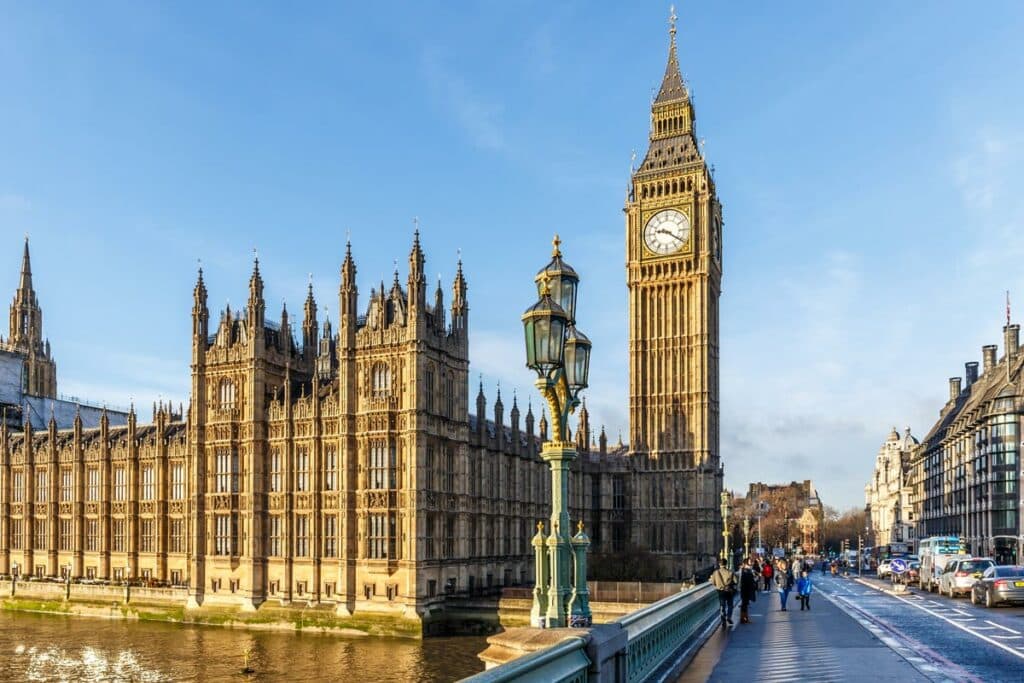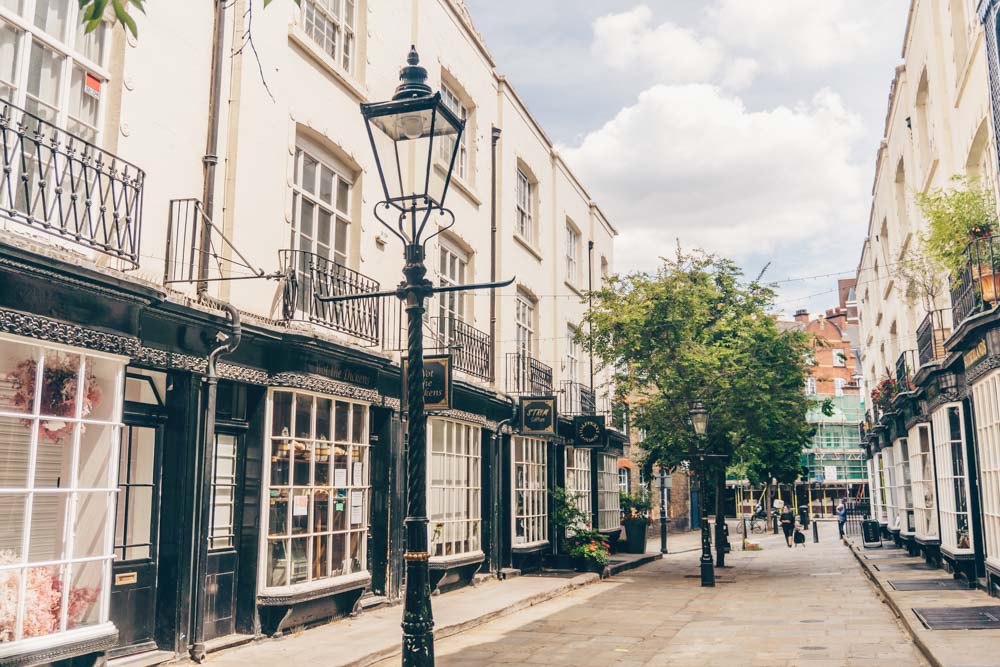Discover the history of London’s first and most famous bridge with this handy guide. Everything you need to know.
Living in London today we don’t tend to think of the Thames as an obstacle. We can go under it, we can take boats along it, we’ve even got 35 bridges to cross it.
That’s not always been the case though. For many years London had only one bridge.
Seeing as it had no competition, this bridge was called London Bridge, and in spite of being the inspiration for the nursery rhyme ‘London Bridge is falling down’, it still stands today – in some late-stage form.
The story of how it ended up the way it is highly interesting, and in true London fashion, full of eccentricity.
The History of London Bridge
London’s First Bridge
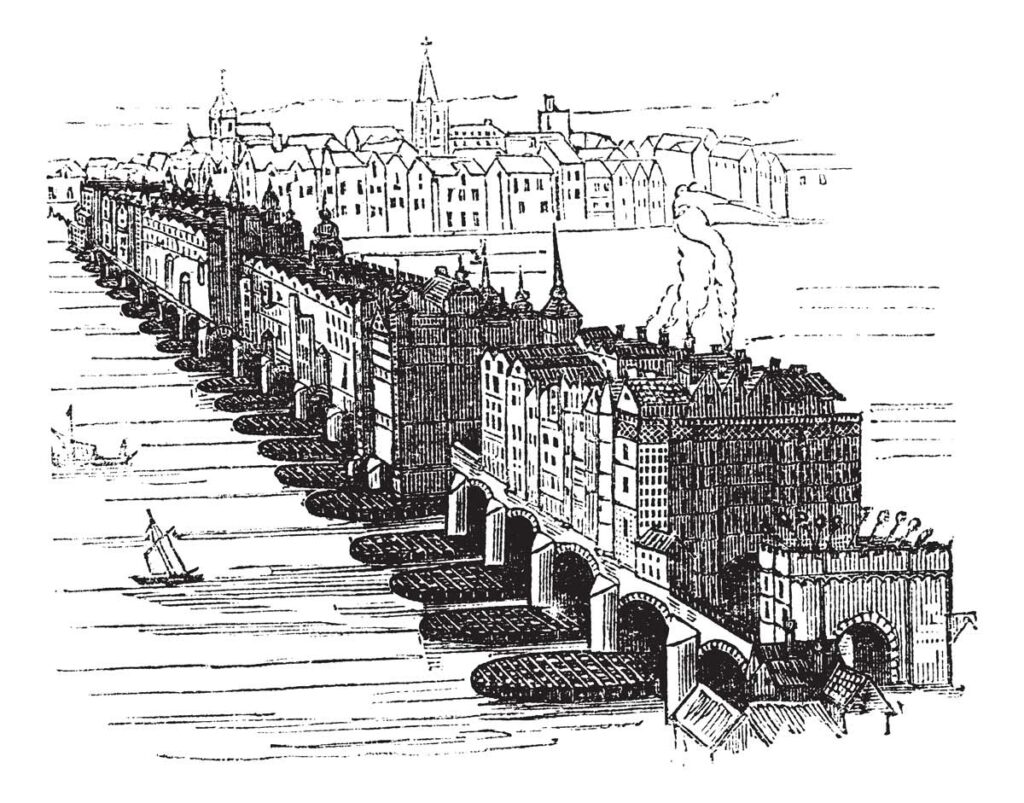
The first bridge to cross the Thames was built by the Romans in 43 AD. It was a simple thing, built in the pontoon fashion of tethering a string of boats in place and placing a bridge over the top of them.
That’s about as much as we hear of London Bridge until 984 when somewhere out of the murky waters of history comes an account of a woman who was taken to a wooden bridge over the Thames and executed by drowning. Her crime: being a witch – she and her son had stuck a bunch of pins into the image of a man. The son got away.
Our next jump through time is much shorter – about 30 years, or the lifetime of a person who was living back then. In 1014 the Danes attacked London. Assisted by a gang of angry Vikings, the defending Saxons attached protective roofing to their boats sailed up the river to attack the bridge.
When they were underneath it, Danes pelting them with arrows and stones, they fixed cables around the bridge and rowed off at full speed pulling the bridge, and part of the Danish army, down with them.
The First Stone Bridge
It wasn’t until 1176 that someone finally got around to building a bridge that couldn’t be pulled down by some determined men and a few warships.
That bridge was completed in 1209 and would stand for around 600 years until it became the subject of one of Britain’s most iconic nursery rhymes.
You may have seen pictures of it. It was, as was the style all over Europe at the time, a living bridge. That means that houses and shops were built on top of it and the bridge became a sort of community of its own.
You’ve probably seen drawings of London Bridge at this time, buildings leaning out over the river, squeezed onto the bridge in any way possible.
They eventually took up most of the space and would reduce traffic to a standstill, which is why most people used to travel by boat.
Why Only One Bridge?
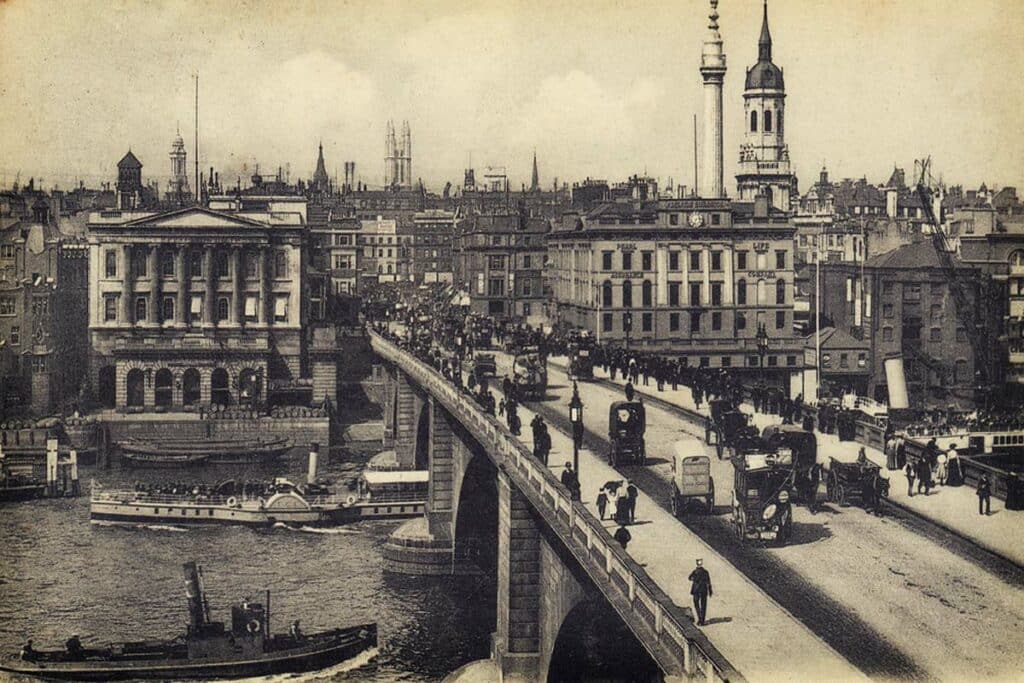
London by this time was home to thousands of people, with thriving communities on both sides of the river. So why was there only one bridge?
Well, that’s because the people who ran the bridge, Bridge House Estates, charged a toll to use the crossing and made quite a tidy sum doing so. Naturally they didn’t want anyone getting in the way of that sweet little deal.
In 1664 King Charles the 2nd made plans to build a second bridge and the City Corporation – Bridge House Estates’ corporate overlords – talked him out of it with the offering of a free loan (shameless bribe) of £100,000.
The lack of alternate crossing options (and egregious congestion problems on London roads) led rise to an industry of boatmen that would ferry people across the river.
They were known as wherrymen and at the peak of their time there were over 10,000 of them operating on the Thames.
Where were we?
Oh yeah. So London had this one bridge, London Bridge, that was covered in shops and difficult/expensive to cross.
It was super iconic though. And somewhat grizzly. The stone gatehouse at one end used to have the heads of criminals and traitors spiked on to it as a warning to the regular folk not to mess around. Oliver Cromwell’s head would end up there in 1577.
Several serious fires – that led to anyone stuck on the bridge being toast – put an end to the grand idea of having loads of wooden houses built along the bridge.
The Second Stone Bridge
By the 1800s, London’s first stone bridge was a crumbling wreck. In 1821, a parliamentary body ordered the building of a new bridge. A man called John Rennie drew up plans for a bridge 30m to the west of the original, where the Thames narrowed slightly.
If you look at a map of contemporary London you can see Gracechurch Street bend toward Monument station. If you follow the street straight down before the bend you’d be tracing the line of the original bridge.
Rennie’s Bridge stood through some of the most dramatic changes in London’s history. The invention of the railway was one of them, then the automobile. The population boom another.
All would contribute to the wear and tear of Rennie’s bridge. Somewhere along the way a lot of other bridges were built across the Thames. London Bridge may have been the city’s first, but it was no longer its most important.
It did still have some pretty wild stories left in it though.
The Current Bridge
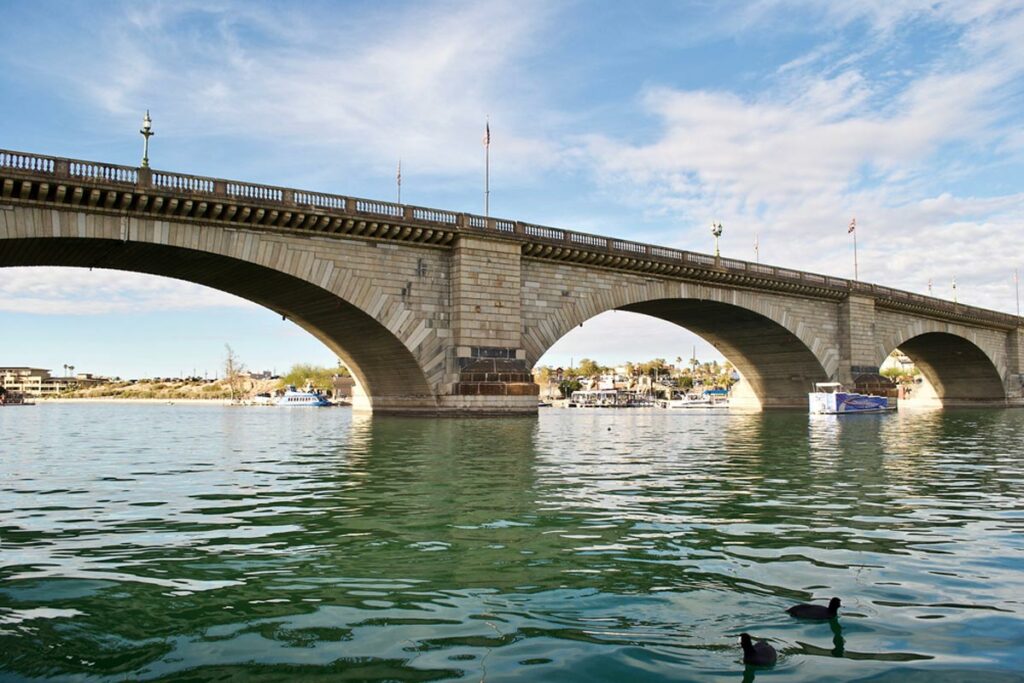
In 1962 London Bridge was discovered to be falling down. A new bridge was needed.
Unfortunately, funds were short of what would be needed to construct a new one. The gov decided to put the bridge up for auction to raise money for the new project.
An eccentric American swooped in with the winning bid in, paying $2,460,000 for London Bridge.
He was the founder of a place called Lake Havasu City in Arizona, and would pay a further $7 million to move London Bridge brick by brick over to the states, where it still stands today.
The bridge that you can see today is the bridge that replaced it. It’s not much to look at, but that’s brutalism for you. The architectural style is meant to show off the materials used. It often divides opinion.
Here at London X London, we quite like it.
Remnants of a Bridge
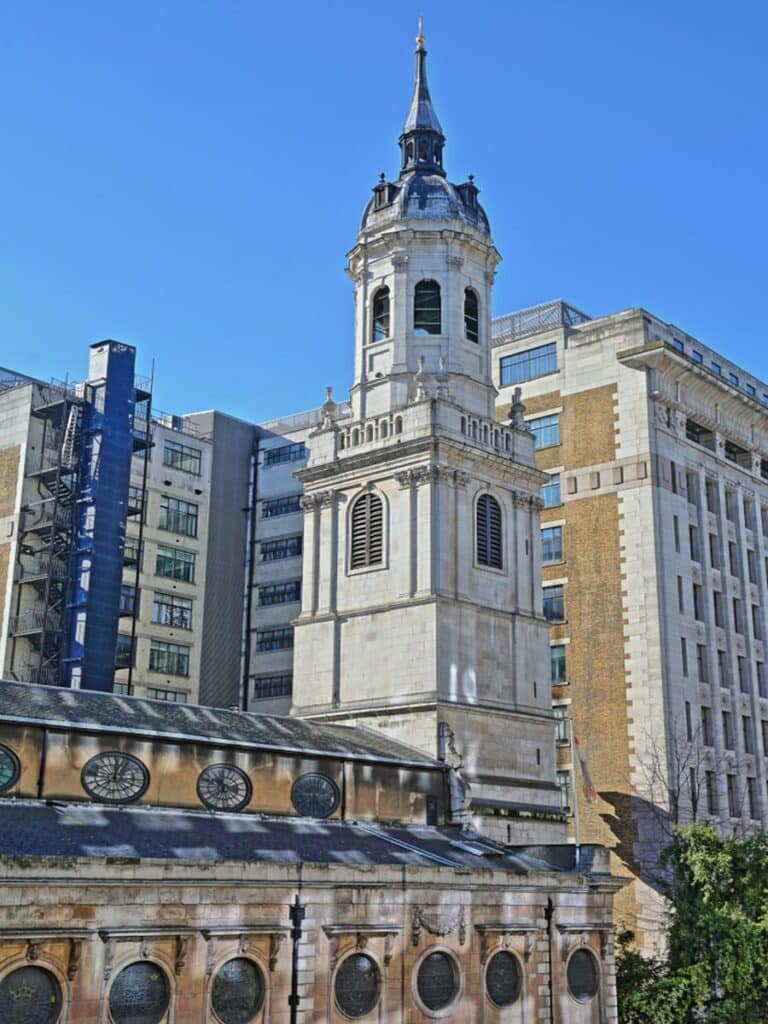
Funnily enough, there are still parts of the old London Bridges around London. They’re not much to look at, but they are there.
On Lower Thames Street you’ll find St Magnus the Martyr’s Church. Part of the old bridge is built into the tower there. It’s an archway that would have been the pedestrian entrance to the old bridge back in the day.
In the same church’s courtyard, you can find a few stone blocks that were part of the medieval bridge. Best of all there’s also a hunk of wood from the old Roman Structure.
It’s said to be in its original spot, illustrating how much the banks of the Thames have moved since Roman times.
And if none of that scratches your history itch, you’ll just have to go to Arizona.
London Bridge: Practical Information
Address: London Bridge spans the North and South Banks of the Thames from Southwark to the City of London.

